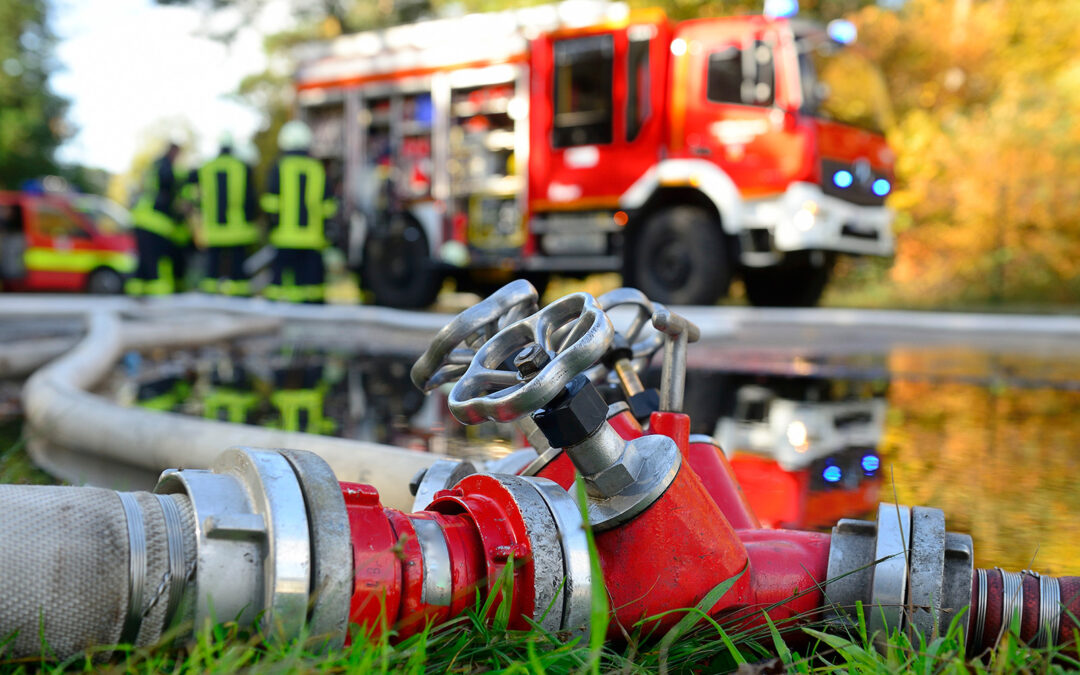A key to building a culture of risk management in rural communities
By Claire Piqueret Rose, Head of Smart Cities & Regions, aconium GmbH
The accumulation of extreme weather events such as heavy rainfall and flooding once again exposed the vulnerability of many regions in Europe in the fall of 2024. In September, large parts of southern Germany were affected by flooding. In October, small communities in particular, e.g. in France and Spain, were once again confronted with life-threatening events for the population – accompanied by criticism of a lack of advance planning and insufficient transparency in civil protection.
While such events cannot be completely prevented in the future, targeted prevention measures can significantly reduce the impact on people and infrastructure. Rural regions in Europe in particular, including Germany, face the challenge of sustainably improving their technical and organizational disaster prevention equipment.
Smart flood and heavy rain management
The implementation of a digital twin for flood damage prevention offers a promising method for creating disaster prevention plans – also for smaller and rural communities. It enables the detailed recording and maintenance of area information, which supports precise analysis and proactive planning in disaster prevention.
Specifically in the context of heavy rainfall events, a digital twin is a digital model or virtual representation of a physical system[1]. The real-time recording of environmental data, such as rainfall and river levels, and their integration into the digital twin enable the creation of precise forecasts of potential flood hazards. The simulation of various scenarios, such as the analysis of the effects of heavy rainfall or the bursting of a dam, makes it possible to determine preventive measures in a targeted manner. Emergency plans and the deployment of rescue teams can also be optimized with the help of the digital twin. Evacuations can be simulated and safe rescue routes to affected areas can be determined.
Communication with citizens leads to the development of a risk culture
Before the disaster: Actively raising awareness among the population
In the area of civil protection, a distinction must be made between communication before and during an emergency. Citizens must have transparent access to information. To this end, regular information events on the topic should be organized and content should be provided in an educational and easily understandable form.
“To raise awareness about risks and their evolution due to climate change, experts and public authorities should meet people where they are-both conceptually, by acknowledging and addressing their concerns, and practically, by engaging with them in their daily environments, such as workplaces, social activities, neighborhoods, and community events.”
Quote from Dr. Cassandre Rey-Thibault, researcher in risk and crisis management at Sciences Po Paris[2]
Classic flyers, videos or checklists are examples of such materials to address a broad target group. The Federal Office of Civil Protection and Disaster Assistance (BBK) provides teaching materials, guides and checklists online[3]. The BBK has also developed the online game “Max & Flocke: Jagd auf Dr. Superschreck” (Max & Flocke: Hunt for Dr. Superschreck) to show how to behave correctly in emergency situations[4]. Live exercises can also be carried out as a further measure. In France, for example, there is a mandatory crisis plan with detailed measures (PPMS)[5] for every school, including an annual exercise. E-learning modules or so-called serious games, such as the French “Plonevez-les-Flots” [6] or “Stop Disaster” [7] (developed by the UN), convey key data and essential content of the disaster prevention plan in a playful way and are proven educational methods for raising awareness.
In addition to raising awareness among the population and the administration, experience and knowledge gained from past disasters should be maintained on an ongoing basis. This creates an approach that moves away from a purely top-down flow of information towards the local animation of a shared risk culture. [8]
During the disaster: Digital & analog messages
During a disaster, it is important that warnings reach the population quickly and directly, e.g. directly on their smartphones. The smart city apps of local authorities or the cell broadcast method, which has established itself as an effective warning tool, are suitable for this purpose. North Rhine-Westphalia is a pioneer in Germany in its use. [9]
With cell broadcasting, it is essential that local authorities can create their own warning content, which is not the case in France, for example.[10] Another important warning tool is a well-developed siren network. This is currently being expanded in Germany.
Intra- and inter-municipal cooperation in flood protection
The creation of a digital twin also makes it possible to break down data silos between different departments, make data centrally accessible and use it for analyses and simulations. This creates institutionalized collaboration with accelerated administrative processes.
In order to realize efficient flood and disaster protection, action should be taken at the right territorial level. Inter-municipal cooperation is often desirable or indispensable. If joint developments at district level make only slow progress, cooperation can be sought at municipal association level or between neighboring towns. These can be scaled up to inter-municipal level at a later stage. Early cooperation promotes the interoperability of the solutions developed as well as a rapid exchange of information and mutual support.
Example of implementation in the neighboring towns of Deggendorf and Plattling
One example is the neighboring towns of Deggendorf and Plattling, which are using the “TwinBy – Digital twins for Bavaria“ funding program of the Bavarian State Ministry for Digital Affairs, which is working on a future-proof disaster management system. aconium GmbH supported the two cities in this project – both in the use case development and in the technical implementation.
Conclusion
In order to exploit the full potential of digital twins, they must be recognized as the central basis for a comprehensive territorial diagnosis. At the same time, it is necessary to further develop regulatory instruments and establish a long-term risk culture. The early and continuous involvement of the population and various interest groups remains essential in order to implement emergency plans efficiently.
Sources:
[1] https://aconium.eu/digitaler-zwilling-im-hochwasserschutz-eine-zukunftsweisende-technologie-zur-schadensminimierung-und-risikoanalyse/
[2] Released quote from the interview conducted by Claire Piqueret Rose on December 19, 24.
[3] https://www.bbk.bund.de/DE/Warnung-Vorsorge/Sicherheit-durch-Vorsorge/Materialien-Hochwasser/materialien-hochwasser.html?nn=20098#vt-sprg-4
[4] https://www.max-und-flocke-helferland.de/DE/Spielen/spielen_node.html#doc79024bodyText1
[5] Plan particulier de mise en sûreté (PPMS), https://www.education.gouv.fr/bo/2023/Hebdo26/MENE2307453C
[6] https://www.risques-cotiers.fr/seformer/miseensituation/
[7] https://www.undrr.org/children-and-youth/stop-disasters-game
[8] https://www.cerema.fr/fr/actualites/culture-du-risque-clefs-mieux-impliquer-populations
[9] https://www.bbk.bund.de/SharedDocs/Pressemitteilungen/DE/2024/02/pm-20-1-jahr-cell-broadcast.html?nn=85578
[10]
https://www.senat.fr/questions/base/2022/qSEQ221003354.html

